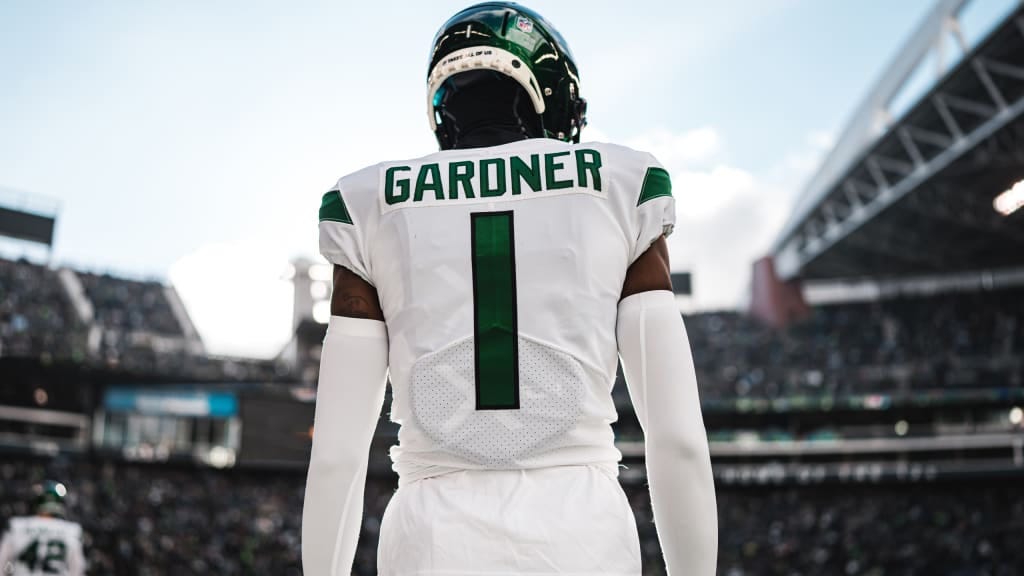Pennies on the Dollar: Why America’s Brightest Skill-Position Stars Might Be Leaving Billions on the Pitch
1. A Thought Experiment Named Sauce
On July 15, 2025, Ahmad “Sauce” Gardner inked a four-year, $120.4 million extension with the New York Jets—$30 million a season, the richest deal ever for an NFL cornerback.
Now imagine Gardner grew up juggling a football instead of tackling with one. Standing 6-foot-3 with verified 4.41-second burst, the same gifts that let him erase receivers would make him a prototype “power 9” striker in global soccer—a Virgil-van-Dijk-sized Haaland. Elite European forwards now earn $30-35 million in base salary alone (Kylian Mbappé’s new Real Madrid deal is €31.25 million, ~$34 million) before a single sponsor bonus lands.
Put differently: Sauce gets cornerback history money; as a top-10 striker he’d merely be keeping up with the Joneses.
2. The Striker Premium Is Real—and Hockey-Stick High
• Erling Haaland: £27.3 million ($35 million) a year from Manchester City.
• Mohamed Salah: £20.8 million ($26 million) base at Liverpool—aged 33.
• Lionel Messi: $20.4 million in MLS, a league whose TV deal is a rounding error next to the Premier League’s.
Those numbers ignore appearance fees, loyalty bonuses, image rights, and multi-continent endorsement portfolios that often double a forward’s take-home pay. Sauce’s endorsements as a corner—valuable, but niche—are projected well below $5 million a year. The gulf widens every commercial break.
3. Why the Same Body Earns More Wearing Shinguards
Revenue model: Soccer is a largely uncapped global auction; NFL salaries are capped at ~48 % of league revenue and squeezed by a hard salary cap.
Scarcity: True line-breaking forwards are as rare as five-tool MLB shortstops; NFL corner talent is refreshed annually by an NCAA talent conveyor belt.
Market size: Soccer monetises five continents; the NFL, mainly one.
Result: a Haaland or Mbappé earns close to 12 % of his club’s wage bill; Sauce’s new deal is ~4 % of the Jets’ cap. The difference is pure economic structure, not athletic merit.
4. The American Sorting Machine
From Pop Warner to Friday-night lights to Power 5 Saturdays, the U.S. system channels its fastest, most explosive teenagers into football or basketball. Soccer is pay-to-play, suburban, often late-specialisation; working-class phenoms pick up shoulder pads because the equipment is free and the scholarships plentiful. Swap the pathway—give those same hips, quads, and visual-search brains an academy contract at age eight—and you likely manufacture world-class No. 9s, inverted wingers, high-line centre-backs.
If Sauce Gardner, Tyreek Hill, or Deebo Samuel had grown up in La Masia or Ajax’s De Toekomst, is there any doubt they’d terrorise Champions League defences?
5. Who Really Wins?
Gardner’s record NFL deal pays him $30 million a year. Mbappé’s base salary equals that; his endorsements (Nike, EA, Dior) are rumoured at another $18-20 million annually. Even a “Tier B” Premier League striker clears Sauce’s gross and dwarfs his off-field upside. For the NFL, that means America’s most electrifying athletes can be rostered for pennies on the global-talent dollar.
The hidden subsidy isn’t public money for stadiums—it’s the cultural funnel that steers million-dollar legs into a capped domestic league instead of the open world market.
6. What Could Change?
Early-access academies: MLS and USL clubs pushing free-to-play pathways in urban cores could peel sprinters away from seven-on-seven circuits.
NIL globalisation: If teenage soccer prospects can monetise likeness at 15, the financial gap with football scholarships shrinks fast.
Data-driven talent ID: Wearables now quantify acceleration, power, and decision speed across sports; scouts can target “future Haalands” still stuck at running back.
7. The Take-Home
The next Sauce Gardner might be posting TikTok goal compilations instead of locking down the AFC East—if the U.S. ever gives him the right grassroots runway. Until then, the NFL will keep signing generational athletes to “record” contracts that, viewed through a global lens, are still a discount aisle. The question isn’t whether America can produce world-class soccer talent. It’s whether we’ll keep letting cap-constrained football grab it first—and pay pennies on the dollar for the privilege.



Nice piece 👏